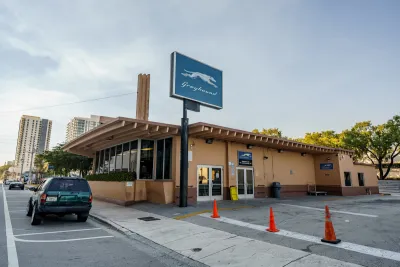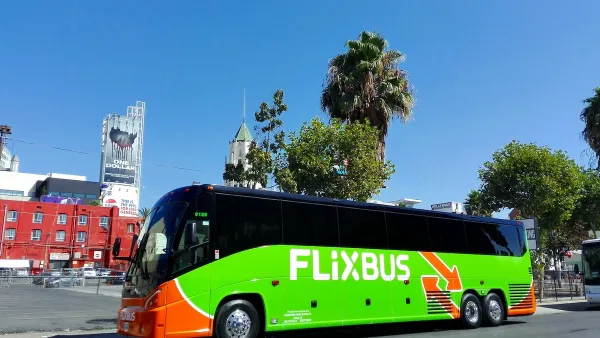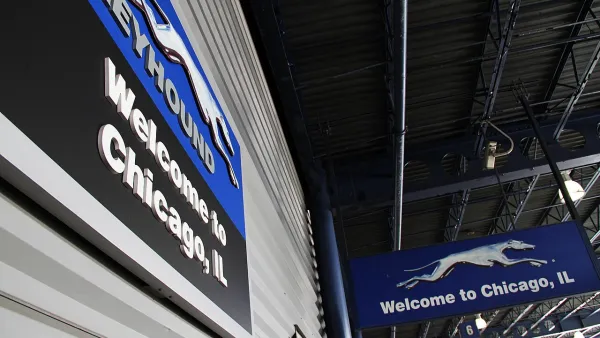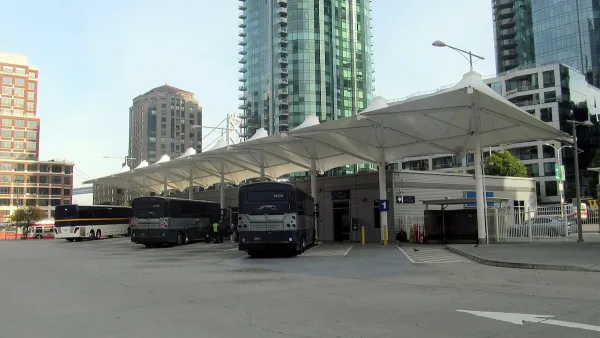As the company shutters stations, passengers are left without shelter, basic amenities, and often farther from central cities and transit connections.

Inter-city bus riders in more and more U.S. cities find themselves having to wait in outdoor parking lots or sidewalks as Greyhound continues to close many of its indoor waiting areas, reports Kea Wilson in Streetsblog USA.
The carrier has been shutting down stations since it sold its stations in 2022 following the company’s sale to Flixbus in 2021. “Some of those stops are located in suburbs miles from the core downtowns where terminals used to be located, with few transit connections for passengers who can't afford a ride to their ride.”
The move is partly a result of newer budget bus companies that purport to keep prices low by eliminating stations. “By ditching the traditional depot — and slashing thousands of station-based jobs in the process — these bus line “disruptors” were able to increase service and cut prices to the bone, even as they added amenities like onboard charging points and WiFi,” Wilson explains.
While some decommissioned stations are being converted to affordable housing and other uses, Greyhound’s core demographic will suffer from the changes. “In an era of accelerating climate change and traffic violence, shared modes like buses and trains should be our mode of first resort, especially on busy holiday travel weekends like this one, which are expected to spike 2.3 percent.”
FULL STORY: As Greyhound Stations Go Extinct, Low-Income Thanksgiving Travelers are Left Out in the Cold

National Parks Layoffs Will Cause Communities to Lose Billions
Thousands of essential park workers were laid off this week, just before the busy spring break season.

Retro-silient?: America’s First “Eco-burb,” The Woodlands Turns 50
A master-planned community north of Houston offers lessons on green infrastructure and resilient design, but falls short of its founder’s lofty affordability and walkability goals.

Delivering for America Plan Will Downgrade Mail Service in at Least 49.5 Percent of Zip Codes
Republican and Democrat lawmakers criticize the plan for its disproportionate negative impact on rural communities.

Test News Post 1
This is a summary

Test News Headline 46
Test for the image on the front page.

Balancing Bombs and Butterflies: How the National Guard Protects a Rare Species
The National Guard at Fort Indiantown Gap uses GIS technology and land management strategies to balance military training with conservation efforts, ensuring the survival of the rare eastern regal fritillary butterfly.
Urban Design for Planners 1: Software Tools
This six-course series explores essential urban design concepts using open source software and equips planners with the tools they need to participate fully in the urban design process.
Planning for Universal Design
Learn the tools for implementing Universal Design in planning regulations.
EMC Planning Group, Inc.
Planetizen
Planetizen
Mpact (formerly Rail~Volution)
Great Falls Development Authority, Inc.
HUDs Office of Policy Development and Research
NYU Wagner Graduate School of Public Service





























